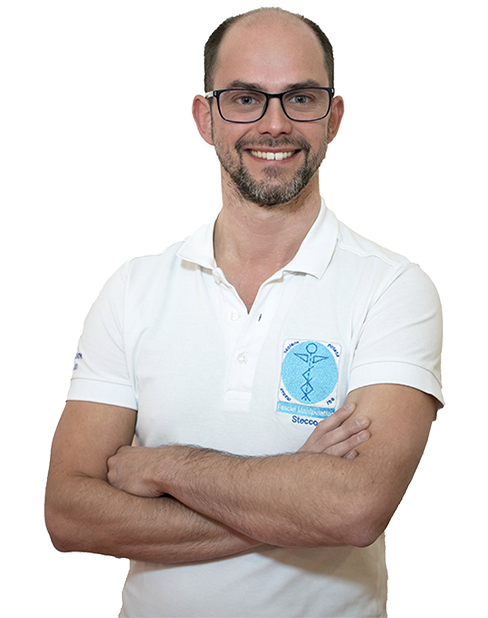
MY CV
in November 2010 I graduated in Physiotherapy with a thesis entitled “Chinese medical gymnastics and their use in pain therapy”.
A few months later I conclude the three-year course of Shiatsu Operator at the School “Center for Shiatsu Studies and Research” in Genoa (Currently ASYE)
The real test for me came the same year of 2011 with my election as Liguria Regional Manager for FISieo (Italian Federation of Shiatsu Teachers and Operators); a path as well as a commitment that I have been pursuing for 4 years trying to contribute to the growth of Shiatsu by organizing various events for Operators and the public
Various insights follow up to the first trip to China to deepen the Tuina (therapeutic massage technique complementary to acupuncture).
In Italy I study the Mezieres Morphological-Postural rehabilitation technique at AIFIMM under the guidance of Dr. Mauro Lastrico.
In the meantime, I continue to deepen my knowledge of Shiatsu and Japanese Moxibustion both in Italy, especially by attending the School of Shiatsu and Moxa Hakusha – White Sand, both abroad and in particular in Japan, where I will often go in the following years to deepen my knowledge of Medicine. Japanese.
In the field of Physiotherapy I begin to study the technique of Fascial Manipulation and I decide to enroll in the first edition of the three-year school held directly by Luigi Stecco and by his children Carla and Antonio.
During the three years I had the opportunity to collaborate with Luigi Stecco in spreading his ideas of comparison between his method and acupuncture, finally becoming a certified teacher for these issues at his school and developing my own personal point of view.
I also work as a teacher in the master courses at the Shiatsu and Moxa Hakusha school.
WHO I AM?
My name is Luca Pella, I am a Physiotherapist, and I study in particular Oriental medicine. This is because my professional and personal goal is to refine the understanding of the “MAN” system under the most modern profiles flanked by the traditional aspects of the various cultures in order to better help the person understand the needs of his own body.
In fact, I think that science as such is the undisputed guide of clinical practice, but it, as a science, still has the possibility of error and has limitations due to the fact that research is carried out with sometimes technological obstacles ( many researches have been disproved over the years by an improvement in the equipment and methods of investigation) sometimes human (choice of criteria for inclusion in a study and interpretation of the results). Aware of this, I have always tried to get to know the traditional methods that have been developed over the centuries to treat the person as a whole. Obviously, these methods also have limitations, often given by not being specific to a specific pathology; sometimes also for the need to understand them more deeply because they have been handed down to us with a language and a form of thought that does not belong to us.
The winning aspect of these methods can be summarized in the understanding of man not only in his biological, chemical and mechanical aspects, but also by taking into consideration his environment, which today we call Exposome (in Chinese medicine this is understood in the term of Zhong Qi which represents the set of internal and external “energies”), his beliefs and mental attitudes (spiritual aspect summarized in oriental medicine with the terms of the 5 vegetative souls – Shen, Hun, Po, yi, Zhii).
Paradoxically these aspects, translated in the correct way, are exactly those that are taken into consideration by the modern Science of Pain brought forward by Dr. Mosley. These studies lead to consider in a very different way everything that we have always thought to be the mechanism of pain sensation.
From my practice of Karate and martial arts I have always had a strong attraction towards the oriental point of view; as this attraction grew, it became a strong curiosity that led me to start studying Shiatsu at the same time I was attending physiotherapy university. Basically I started with the brain divided into 2 parts and the challenge with myself has always been to combine the 2 theories, often succeeding.
In the years after my basic studies, I studied various aspects of the 2 worlds more carefully, studying postural aspects more carefully (through the study of the Mezieres technique) and the study of Tuina and Classical Chinese Medicine on the other. Later I began to study various aspects of manual therapy, especially trying to deepen the aspect of fascial treatment until I arrived at the Fascial Manipulation method according to Stecco, of which I followed the three-year school directly with the founder Dr. Luigi Stecco and his children Carla and Antonio Stecco. At the same time, I continued to study the Japanese moxibustion technique both in Italy and abroad (Japan, Spain, Portugal …).
In recent years, I have also felt the strong need to improve my knowledge of anatomy and I attended courses in Anatomical Dissection at the University of Paris.
All these experiences of mine have led me each time to radically change my previous beliefs about how to best help the people who come to me.

